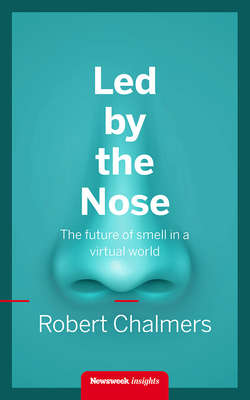Читать книгу Led by the Nose - Robert Chalmers - Страница 6
На сайте Литреса книга снята с продажи.
2 The first sniff
Оглавление“The sniff has no equivalent in sight or hearing. It’s an essential ability and yet it can’t be performed covertly. The brain isn’t just a passive recipient of smells. It manages the acquisition of odour by speed.”
The notion of being able to capture, blend and disseminate smell is not a new one. As early as 1884 the French writer J-K Huysmans published his novel À Rebours (Against Nature)[1] in which the main character, a reclusive aesthete, operated what is described as a “mouth organ” consisting of a keyboard connected to tubes leading to casks of liqueurs, enabling a player to compose a kind of fragrant alcoholic symphony. A similar device is found in hotel rooms in Aldous Huxley’s Brave New World[2].
“The scent organ,” Huxley wrote, “was playing a delightfully refreshing Herbal Capriccio – rippling arpeggios of thyme and lavender, of rosemary, basil, myrtle, tarragon; a series of daring modulations through the spice keys into ambergris; and a slow return through sandalwood, camphor, cedar and new-mown hay (with occasional subtle touches of discord – a whiff of kidney pudding, the faintest suspicion of pig’s dung) back to the simple aromatics with which the piece began.”
Attempts to construct such instruments in the real world have met with limited success. Historically there have always been entertaining writers on fragrance; I am personally fond of a 1923 volume called Aromatics and the Soul: A Study of Smells by an eccentric British ear, nose and throat doctor called Dan McKenzie[3]. In recent years, however, the science of smell has begun to attract writers with real literary ability, such as the controversial biophysicist Luca Turin, and Avery Gilbert, a New York based author who, in 2008, produced the definitive social history of olfaction called What the Nose Knows: The Science of Scent in Everyday Life[4]. Gilbert, a fragrance expert, is also a psychologist trained in neuroscience. What the Nose Knows is one of those rare books which is so entertainingly written that it is capable of captivating people who have no previous interest in what they might assume to be an esoteric subject. (Other such works, I’d suggest, include George Plimpton’s Fireworks[5], Jason Webster’s Duende: A Journey in Search of Flamenco[6], Charles Sprawson’s meditation on swimming, Haunts of the Black Masseur[7] and – you’re going to have to trust me on this one – George Hervey and Jack Hems’ 1948 masterpiece, The Goldfish[8].)
Of all the chapters in What the Nose Knows, perhaps the most memorable is Gilbert’s history of attempts to build aroma machines designed to complement dramatic and cinematic productions; a section which has the title “Hollywood Psychophysics.”
The first serious system was designed in 1897 by one David Belasco, to perfume a play set in San Francisco’s Chinatown. “The entertainment,” according to the New York Journal, was punctuated by “small whiffs of nauseating odour that was produced for atmospheric and not for seweristic reasons.”
In the 1930s an American-Swiss scientist called Hans Laube developed a system for releasing scent into cinema auditoriums: the prototype of what Laube would eventually patent as Smell-o-Vision. When working on Fantasia[9] in the late thirties, Walt Disney toyed with the idea of trying to equip cinemas with a floral smellscape, but abandoned the idea as too costly.
There is a 1944 Warner Brothers cartoon called “The Old Grey Hare” (a trailer for which is posted on YouTube), in which Bugs Bunny and his would-be assassin Elmer Fudd are transported to the year 2000. The elderly Fudd stumbles across a newspaper whose broadsheet design, typeface and, presumably, circulation, have somehow survived into the new millennium. The front-page headline reads: “Smellevision Replaces Television”.
Laube’s Smell-o-Vision was finally put into production in the late 1950s. The system comprised an assortment of scented cylinders mounted on a rotating platform. Aromas were pumped from this so-called “smell brain” along tubes which led to crude atomisers, one of which was attached to each seat-back. Smell-o-Vision’s most famous incarnation appeared in 1960: Michael Todd Jr’s cinema production Scent of Mystery[10], starring Denholm Elliott, Peter Lorre and a young Elizabeth Taylor.
“First they moved (1895)!” the film’s posters proclaimed. “Then they talked (1927)! Now they smell (1960)!”
